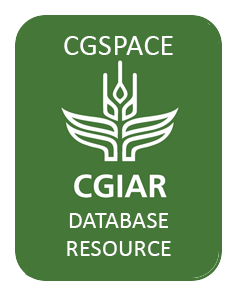Differences in spatial structure of agricultural areas in villages of commune of Bilgoraj with regard to land fragmentation
The current state of agricultural production space is the outcome of centuries of human activity, as conditioned by socio-economic, legal, and political factors. The characteristic features of the spatial layout of land, which has been shaped in this historical process in the rural areas of southern and south-eastern Poland, are farms divided into a large number of parcels, lack of access to parcels, irregular shapes of parcels, and their scattering in space.
Spatial diversity of agricultural areas with no access to roads in villages of commune of Bilgoraj
Agricultural transport roads play an important role not only from the point of view of individual farm holdings, but also the general development of rural areas. Roads constitute an element of the technical infrastructure indispensable for communication and transport; they play a role in shaping the rural landscape, and the routes they follow affect the forms and size of agricultural land and forest areas found within the area covered by a given road system. The existing public road network does not always provide access to all fields.
Prioritization of land consolidation and exchange works in villages of eastern Poland using example of Frampol commune
Land consolidation and land exchange are two important measures that can be used to improve the spatial structure of farm holdings. Unfortunately, land cannot be consolidated and exchanged in all villages of a given area simultaneously, due to economic, technical, and social considerations. Instead, an analysis has to be carried out, which allows one to rank the villages with regard to how urgently they need consolidation and exchange of land.
Differences in spatial structure of agricultural areas in Ksiezpol commune with regard to productivity of cropland and grassland
Soil quality is one of the most important factors determining the potential for obtaining a high profit from farming. The agricultural quality of soils is described by soil quality classes, and the suitability of soils for growing particular plants or plant communities is described in terms of soil-agricultural complexes. A unified soil classification has been developed for the entire area of Poland, which takes into account the morphological features and physical properties of Polish soils.
Differences in spatial structure of village of commune Ksiezpol with regard to parcel shape index
The spatial structure of rural areas in eastern Poland is characterized by large fragmentation of privately owned farmland, as well as the scattering of parcels across villages and beyond their boundaries. An important defect is also the unfavourable shape of land parcels, which hampers and sometimes even makes impossible rational management of land in a given area. Shape analysis has been the focus of numerous publications in fields such as geography and ecology, and, more recently, also geodesy.
Utilization of agricultural land in the Russian Federation
This article reviews the initiatives for setting up rational use and protection of agricultural lands in order to ensure accelerated growth of the agricultural sector of the Russian Federation, enhancing its sustainability, efficiency, competitiveness, and environmental safety.
The analysis of agricultural land patterns of the Altai Region
In the structure of the land fund of the Altai Region the category of agricultural lands is the most extensive, it is more than 11.5 million hectares. More than 6.1 million hectares belong to individual citizens. There are more than 5 million hectares of state and municipal ownership. The rest of the lands are owned by legal entities. There were analyzed the natural and climatic conditions of the land fund of the Altai Region and its patterns in the natural subzones.
Legitimation of "special value" as a tool of legal protection of lands: the case of Ukraine
The main factors that influence the rational land use, conservation and protection of land resources are global ecological and food security, world's population growth, climate change, land acquisition by large world agricultural corporations etc. In this process a priority of attention is protection of the important agricultural lands (in Ukraine, these lands are called especially valuable lands - EVL). Besides, lands with highly productive soils, areas with undisturbed ecosystems, territories with objects of cultural heritage, natural therapeutic resources are a part of EVL.
Effect of land use change on urban heat at Vientiane capital, Lao PDR
Improving the accuracy of remotely sensed irrigated areas using post-classification enhancement through UAV [Unmanned Aerial Vehicle] capability
Although advances in remote sensing have enhanced mapping and monitoring of irrigated areas, producing accurate cropping information through satellite image classification remains elusive due to the complexity of landscapes, changes in reflectance of different land-covers, the remote sensing data selected, and image processing methods used, among others. This study extracted agricultural fields in the former homelands of Venda and Gazankulu in Limpopo Province, South Africa.
Highlights of soil and water conservation investments in four regions of Ethiopia
This paper provides details of soil and water conservation (SWC) investments in Ethiopia over the past 20 years. It presents SWC practices and estimates the level of SWC investments in different regions. The paper focuses on four principal agricultural regions: Amhara, Oromia, SNNPR and Tigray. Primary and secondary data were collected for the analysis, and consultations were conducted at regional levels. Primary data on diverse SWC practices, their numbers and areal extent were obtained from the archives of regional Bureaus of Agriculture (BoAs).



